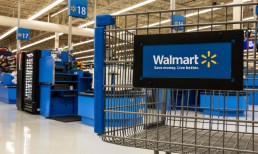Sometimes it takes years to become an overnight success. The quote actually came from Prince, who honed his craft for years as a teenager before exploding on to the music scene in 1978. In the payments industry, the statement might also apply to buy now, pay later (BNPL) platforms, which had been founded in Australia in 2014 and became an “overnight success” in 2020 due to the digital-first economy and its discovery by younger debt-averse consumers. But like most overnight successes, it was a long time in the making.
As Afterpay Co-founder and Co-CEO Nick Molnar told Karen Webster in a recent conversation, the success of the company in Australia has followed a pattern. It went from being exactly zero percent of merchants when it launched, to now being offered by a majority of players in the online apparel and beauty segments in Australia. Since its U.S. launch in 2018, he noted, the firm has seen the same pattern emerge: “70 percent of our transactions in the U.S are for fashion and beauty,” Molnar said.
And while BNPL had been picking up speed for the last several years, the emergence of the digital shift in 2020, combined with a sudden uptick in consumer interest in better understanding and controlling spending, acted as a major tailwind for BNPL, pushing it out of the periphery and into the spotlight among a growing share of consumers.
And where there is consumer love, there is business interest. The last year has seen a lot of competition in the space. BNPL player Affirm just exited its IPO valued at $12 billion, PayPal has waded into the space, as have the card networks and card issuers. Plus, Webster noted, it is beginning to feel like every time one turns around, they are presented with “a press release from someone else that’s launched yet another buy now pay later scheme.” It’s become a crowded segment, but that’s not a fact that bothers Molnar.
“What’s also become distinctly apparent is that the consumer is realizing the differences between what the market perceives as competitors to us, and what the consumers understand as competition,” Molnar said. “Consumers are showing preference and using products with different frequency, curves and different levels of engagement. There are a couple of unique attributes to Afterpay that build a different relationship with the customer.”
These attributes will be critical, he said, particularly going forward as BNPL becomes a more typical part of every transaction journey when consumers shop online and off.
Advertisement: Scroll to Continue
Building The Connection Point For Consumers
Molnar said that as crowded as the market for BNPL is getting, he doesn’t have much in the way of commentary on any of Afterpay’s specific competitors, other than an overall observation that consumer choice is a good thing. More entrants in the market mean more choices for customers which is ultimately a good thing. There are, he noted, a variety of ways to do BNPL and installment payments.
Afterpay, for its part, is dedicated to the things that differentiate it in the market — namely that from the consumer side, the firm is making a free offer. There are no fees because, at its base, he said, Afterpay may be offering a financial service to customers, but it never designed its product that way.
“That certain business models rely more heavily on that consumer income is becoming more apparent,” he told Webster. “Whereas Afterpay does the reverse of that. We rely entirely on our merchant income, so it’s fundamentally free for the customer. The benefit of Afterpay is that we didn’t start life as a finance company. We don’t have any of our transactions charging interest. It’s very difficult to charge an interest rate on one side and be an Afterpay-like model on the other side, because the purity of your promise to the consumer isn’t there.”
And that purity of promise, he said, means Afterpay can do more with that trusted customer relationship than offer the increased conversion rates and basket-sizes typically associated with BNPL offerings. It can also make the critical introductions between merchants and consumers whose shopping preference for Afterpay is so defined, they seek out merchants who offer it.
Navigating A Changing Relationship
Consumers want a different way to pay, he said, and they are demonstrating that by the shift from credit to debit and the use of BNPL offerings. But what will determine which ones really last and really make a difference? Which ones offer the consumer something different than the old revolving-credit arrangements of the past, that certainly let consumers pay later, but in opaque and often expensive ways? The ones that end up being new variations on profiting off consumer debt aren’t really a positive change from the kinds of things that existed a decade ago.
“With Afterpay’s business model, the moment consumers determined that our offering is genuinely in their favor, they changed their shopping preferences,” Molnar said. “To think that, as a payment provider we can refer as much traffic to retailers as social media platforms — it’s a very unique position and privileged position to be in.”




